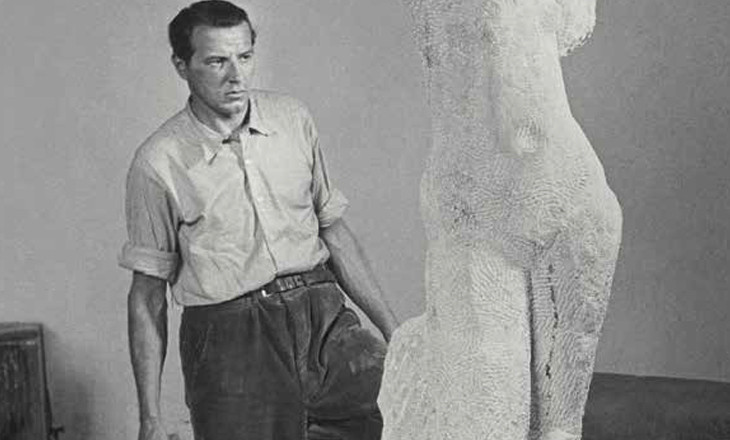Wotruba
11 Dec 2012 - 27 Oct 2013
WOTRUBA
Life, Work and Impact
11 December 2012 - 27 October 2013
Fritz Wotruba (1907–1975) is considered to be one of the most important European sculptors of the twentieth century. Today he numbers among the “classics” of modern sculpture. Through his continual exhibition presence in Europe and the USA from the 1950s onward, his work received widespread international recognition. As the successful teacher of multiple generations of sculptors, he exerted a profound influence on Austrian sculpture in the postwar decades, attuning it to the developments of international modernism. Wotruba’s active and vocal engagement in a wide variety of cultural and political issues made a lasting mark on Austrian cultural life after 1945. Both the work and the man himself were surrounded by a “mythos” marked by the image of a “lonely champion of the highest artistic ideals” and the concept of “resistance”: against the hardness of stone as a material, against the small-mindedness of the postwar era, against reactionary conceptions of art.
Wotruba’s central significance for Austrian sculpture is grounded both in the monumentalizing historical forces under which his reception developed and in the great vibrancy and power of his work. From today’s perspective, Wotruba’s art should be seen within a field of tension emanating from his personal values, his unbending will to develop his own artistic position, his struggle to give expression to a tragic view of humanity, his openness to Western modernism and his lifelong confrontation with Austria’s artistic and political heritage.
Life, Work and Impact
11 December 2012 - 27 October 2013
Fritz Wotruba (1907–1975) is considered to be one of the most important European sculptors of the twentieth century. Today he numbers among the “classics” of modern sculpture. Through his continual exhibition presence in Europe and the USA from the 1950s onward, his work received widespread international recognition. As the successful teacher of multiple generations of sculptors, he exerted a profound influence on Austrian sculpture in the postwar decades, attuning it to the developments of international modernism. Wotruba’s active and vocal engagement in a wide variety of cultural and political issues made a lasting mark on Austrian cultural life after 1945. Both the work and the man himself were surrounded by a “mythos” marked by the image of a “lonely champion of the highest artistic ideals” and the concept of “resistance”: against the hardness of stone as a material, against the small-mindedness of the postwar era, against reactionary conceptions of art.
Wotruba’s central significance for Austrian sculpture is grounded both in the monumentalizing historical forces under which his reception developed and in the great vibrancy and power of his work. From today’s perspective, Wotruba’s art should be seen within a field of tension emanating from his personal values, his unbending will to develop his own artistic position, his struggle to give expression to a tragic view of humanity, his openness to Western modernism and his lifelong confrontation with Austria’s artistic and political heritage.

